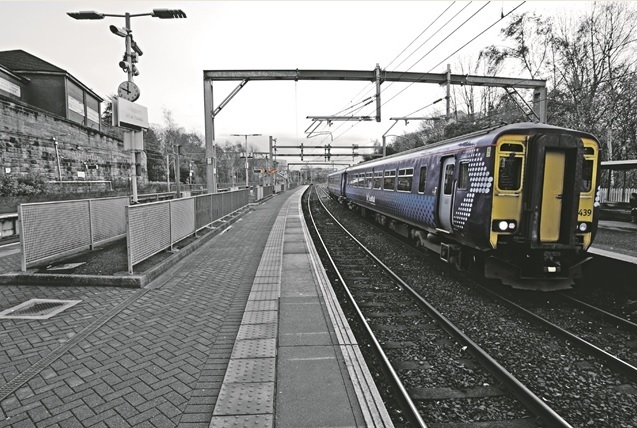
IF YOU’RE one of the thousands of passengers baffled by punctuality stats that don’t match your experience, The Sunday Post today reveals what is really going on.
Our exclusive investigation found:What is, and isn’t, a “late train”, according to official figures. Passengers travelling to the 75 “destination” stations across the country face a punctuality postcode lottery How train reliability rates have decreased since the late 1990s.Posters in railway stations up and down the country boast of how more than eight in 10 trains 83.3% to be exact on the network arrive on time.
The official figure used to calculate punctuality is called a public performance measure and it regards all long-distance journeys as on time if they arrive no more than 10 minutes late.
And for shorter journeys the type commuters make every day trains are judged to be on time if they are no more than five minutes overdue.
But many commuters regard this as a nonsense.
Now a report released as part of a “transparency” drive by the new operators of ScotRail, Dutch firm Abellio, has exposed the true picture.
It lists the proportion of trains that arrived within 59 seconds of their booked arrival time at every station where at least one service terminates.
The worst performing station was Arbroath in Angus. Just 6.1% of the services terminating there in the year up to October arrived on time.
Second bottom was Ardrossan Harbour, in Ayrshire, with an 10.9% punctuality rate.
It was followed by High Street in Glasgow which recorded a rate of 19.5% and Springburn in Glasgow, on just 22.2%.
At the other end of the scale, 89.6% of trains terminating in Cowdenbeath, Fife, and 89.4% of those completing their journey in Dunbar, East Lothian, arrived within 59 seconds.
Train stations Create column chartsFor every minute a train is late, passenger satisfaction drops by two percentage points.
Critics last night called for big improvements.
David Sidebottom, passenger director at campaign group Transport Focus, said: “Passengers want their trains actually on time, not up to five minutes late as allowed under the existing rules, so we welcome publication of this ‘right-time’ performance information.
“The rail industry must now use it to deliver big improvements to some of the really poorly-performing services that have been revealed.”
The right time figures also recorded performance at Scotland’s biggest commuter destinations.
Trains terminating at Glasgow Central arrived within 59 seconds of the published arrival time 56.8% of the time while those going to Queen Street reached a figure of 56.6%.
The punctuality for Edinburgh Waverley, Aberdeen and Dundee was marginally better at 60.8%, 76.4% and 71.2% respectively. However, at the capital’s Haymarket station used by more than 100,000 passengers every day only 39.5% of trains arrived on time.
Scottish Conservative transport spokesman Alex Johnstone said: “There’s clearly a major postcode lottery when it comes to train times across Scotland.
“While some are very good, rates in other areas are so poor people have probably given up even consulting the timetables.
“It’s not cheap to travel by train, particularly on some routes, and the least commuters expect is for their service to run on time.”
Arbroath councillor David Fairweather described the service to the station in his home town as “poor”. He said: “These new ‘on time’ figures point to a poor service for the people of Arbroath. We deserve better.”
However, ScotRail bosses pointed out the Arbroath stat only applied to one service a day the 16:11 from Glasgow Queen Street and that it was late largely as a result of congestion.
The independent safety and economic regulator Office of Rail and Road say “real time” punctuality of ScotRail services has fallen from a high of 76% at the start of 1998 to 57% last month.
On Friday, Scottish Labour said a summit on Scotland’s railways was needed to deal with the “chaos engulfing the system”.
Last night the party’s transport spokesman David Stewart added: “We should bear in mind that punctuality is not the only factor that is important for the public in judging Scotrail.”
Earlier this month, ScotRail was fined £265,000 for failing to meet strict standards for trains and stations over a three-month period.
A spokesman for Transport Scotland said: “We support the adoption of a measure of right time arrival.”

Enjoy the convenience of having The Sunday Post delivered as a digital ePaper straight to your smartphone, tablet or computer.
Subscribe for only £5.49 a month and enjoy all the benefits of the printed paper as a digital replica.
Subscribe